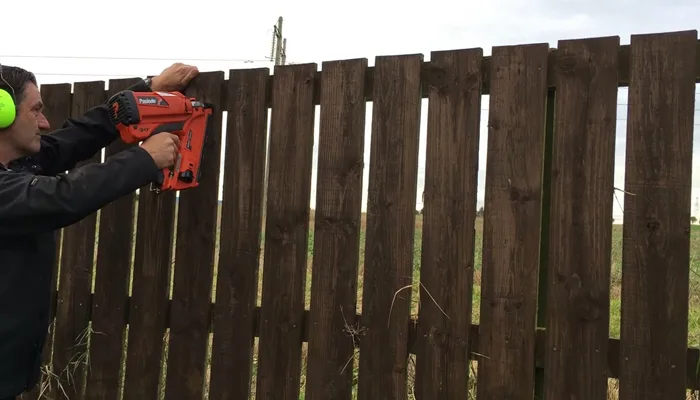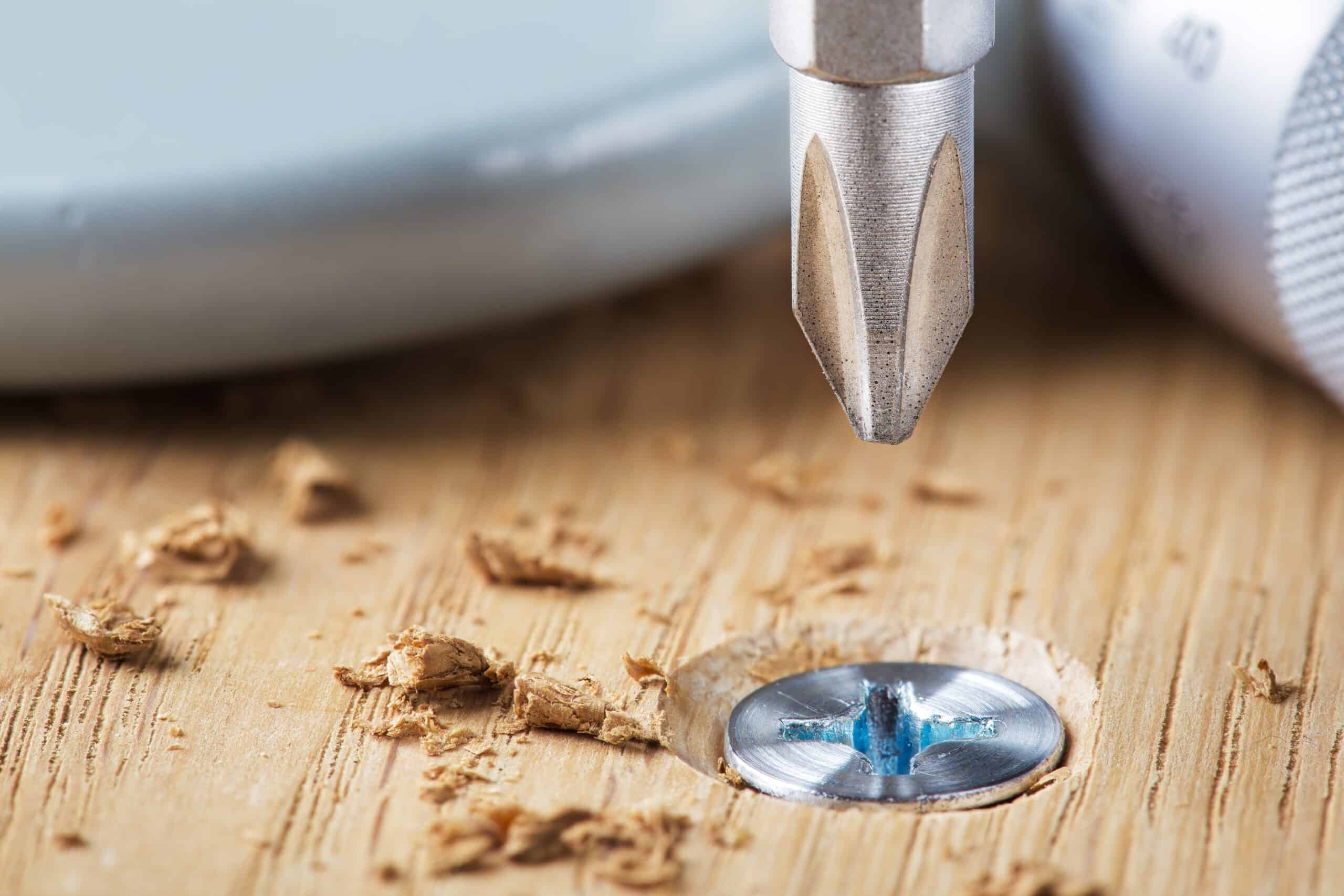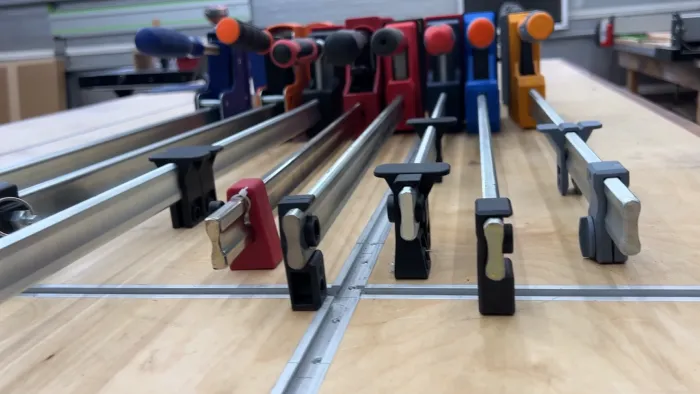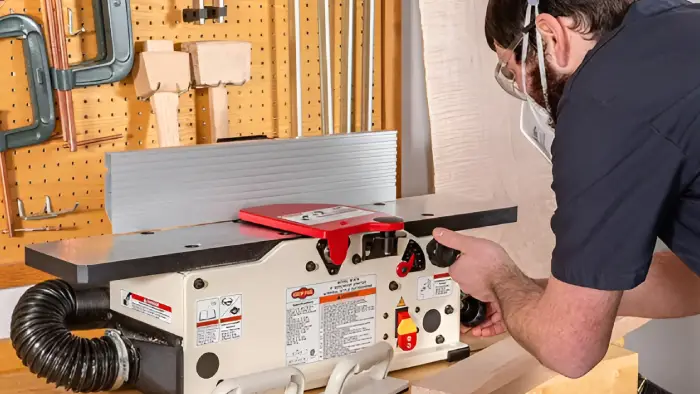WoodenuKnow.com is a participant in the Amazon Services LLC Associates Program, an affiliate advertising program designed to provide a means for sites to earn advertising fees by advertising and linking to Amazon.com and may earn from qualifying purchases.
A fence installation would not be complete without fence pickets. They provide the vertical support for the horizontal rails, giving a fence that finished look. The most common size of the picket is made from 3 1/2″ wide and ¾” or ⅝” thick.
But they can also be comprised of 5 1/2″ or even 11 1/2″ wide plywood. The important thing is to ensure that the pickets are adequately spaced and nailed to provide a solid support for the fence.
There is a growing question regarding nailing fence pickets among DIYers: What size nail gun for fence pickets is the most appropriate? If the picket fences have identical picket sizes, the proper size may be a 6d to 8d nail maintaining nail gun.
In the following article, we will discuss this topic in greater detail. As part of our discussion, we will discuss what type of nail gun and nails are best for pickets and how to nail correctly.
Most Appropriate Nail Size for Fence Pickets
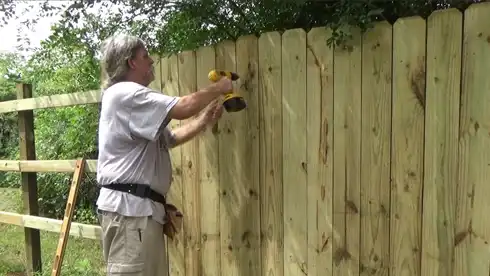
Using the proper nail size and nail gun for fencing is essential when installing pickets. If the framing nails are too small, they may not hold the pickets in place. If the nails are too large, they can split the pickets.
Therefore, using the right size nail is essential when installing fence pickets. The most appropriate size of nail for pickets is 1-1/2 inch ring shank nails or 1-1/4 inch to 1-3/4 inch long screws.
These ring shank nails or screws should be driven into the center of the fence pickets at a 21-degree angle. It is crucial to ensure that the nails or screws are driven into the pickets’ center to prevent splitting.
This measurement can vary depending on the thickness of the pickets. Although, as a general rule of thumb, nailing 1-1/2 inches from the top and bottom of the fence picket should provide adequate support.
What Size Nail Gun for Fence Pickets is Most Appropriate?
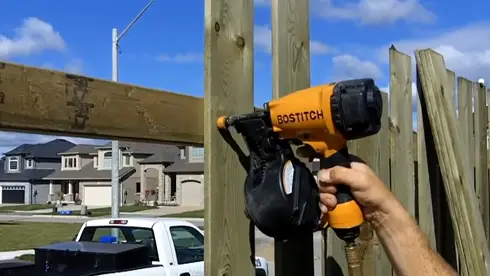
The width of the pickets will ultimately dictate what size nail gun you’ll need to use. The most common widths for pickets are 3 1/2″ inches, 5 1/2″ inches, or even 11 1/2″ inches. But the recommended size of the nail gun will always be based on the picket sizes.
When nailing on pickets, it is vital to use a nail gun that is powerful enough to drive the nails or screws into the picket without splitting it. The amount of power needed will be based on the width and thickness of the pickets.
For example, if you use 3 1/2″ wide pickets that are ¾” or ⅝” thick, a 6d to 8d nail maintaining gun should be strong enough to drive screws or nails into pickets without splitting them.
However, if you use wider or thicker pickets, you may need to use a more powerful nail gun. The wider and thicker the fence picket, the more influential the nail gun will need to be.
In nails charts, this corresponds to nails of 6d, 5d, or 4d length. However, some individuals recommend using 8d nails. There are instances when the 2 1/2 inch shank length is simply too long and ends up sticking out of the rail, which is both unattractive and dangerous.
It is possible to avoid the problems associated with long nails by using shorter nails as long as 1 1/4 or 1 1/3 inches, typically between 3d and 4d or 12 to 14 gauge.
Recommended Nail Guns for Fence Pickets
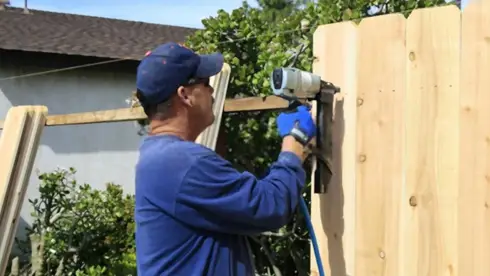
You can find a variety of different nail guns on the market. But not all nail guns are created equal. When it comes to finding the best nail gun for wooden fence pickets, you’ll want to find nail guns that are durable and dedicated to driving nails/screws deep into pickets without splintering them.
The followings are some of the best nail guns for pickets that meet these criteria:
01. Coil Siding Nail Gun:
This is the best nail gun designed to drive nails into siding and fencing. It can handle both 3 1/2″ wide and 5 1/2″ wide pickets. It has a depth-of-drive adjustment that helps to prevent picket splitting.
In addition to the large round head, coil nails are ideal for attaching pickets or palings as they stabilize the nail. These nails are easier to insert and will remain in place. Please ensure that the nail is galvanized to prevent rusting.
02. Framing Gun:
The framing nailer is a more powerful tool to handle thicker and wider pickets. Framing nail guns can drive nails up to 3 1/2″ inches into the picket. The cost of framing nail guns is lower if you can locate nails suitable for the nail gun.
Nails VS Screws for Fence – Which One is Better?
Even though both can secure the pieces together, a screw that matches the right size may be more effective than a nail.
In addition to providing better holding power, the screws will also help prevent the warping of the boards. Furthermore, screws tend to stay put as opposed to nails that shift.
The screws require more time to install as compared to nail guns. Additionally, the proper nails are expected to last long, so they do not require frequent replacement.
The use of screws will ensure that the boards remain in place, and you will not be concerned about nails moving around. If you do not wish to use screws, you can use nails from a right nail gun.
Stainless Steel VS Galvanized Screws and Nails
Galvanized or zinc-plated steel screws or nails can be used for most non-pressure treated wood. Only cedar fences cannot be used with these materials.
The zinc on the zinc-coated screws will react with the materials released by cedar and pressure-treatment wood when rainwater enters the building. Consequently, dark corrosion streaks will appear on the nails or screws.
When attached to pressure-treated wood and cedar pickets, stainless steel or hot-dipped galvanized nails or screws work best.
What to Consider When Nailing on Fence Pickets
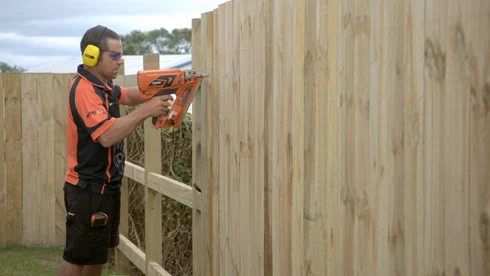
Nailing on pickets is not as easy as it looks. You might end up with cracks and dents, or your fence or wire fence may collapse if you’re not careful. You need to take a few things into account before you start nailing.
The following are some of the things you need to consider when nailing on pickets:
01. Type of Nail Gun
As mentioned earlier, different types of nail guns are available on the market, each designed for a specific purpose. If you’re going to be working with pickets, you’ll need to choose the most suitable nail gun (like framing nailers) that’s specifically designed for that purpose.
02. Type of Nails or Screws
The next thing you need to consider is the type of nails or screws you will use. There are different types of roofing nails and screws available, each with its purpose.
03. Size of Nails or Screws
The size of the nails or screws you use is also essential. If you use nails that are too small, they may not be able to hold the pickets in place. On the other hand, if you use nails that are too big, they may split the pickets.
04. Diameter of Nails or Screws
Another factor you need to consider is the diameter of the nails or screws. If the nails or screws are too thin, they may not be able to hold the pickets in place. On the other hand, if the nails or screws are too thick, they may split the pickets.
05. Picket Thickness
Consider the thickness of the pickets as well. If the pickets are too thin, they may not be able to hold the nails or screws in place. On the other hand, if the pickets are too thick, the nails or screws may split them.
06. Fence Rails
Another essential factor to consider is the fence rails. If the fence rails are too weak, they may not be able to support the pickets. On the other hand, if the fence rails are too strong, they may split the pickets.
07. Fence Post
Fence posts also play an essential role. If the fence post is too weak, it may not be able to support the pickets. On the other hand, if the fence post is too strong, it may split the pickets.
These factors are just some things you need to consider when nailing on pickets. If you consider all of these factors, you’ll be sure to choose the best nails or screws for your fencing projects.
FAQs
Here are a few frequently asked questions about nail guns that will fit fence pickets:
01. Can I Use Nail Guns for Fence Pickets?
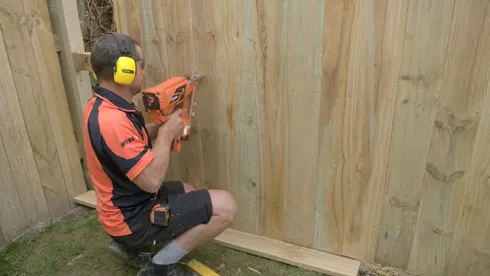
Yes, you can use nail guns for fence pickets. Just make sure to choose the best nail gun that’s specifically designed for that purpose.
02. Can I Use a Brad Nailer for Fencing?
It is not possible to build a fence using a brad nailer. The brad nail gun is best suited for indoor use as the brad nails are too short and narrow to hold the fence wood together correctly as they are too short and narrow.
03. Should I Leave a Gap Between Fence Pickets?
It is not necessary to leave a gap between fence pickets. This prevents moisture absorption through the pickets, resulting in a more durable and attractive fence.
04. Are Nails Stronger Than Screws?
Nails are typically not as strong as screws, but certain types of nails can be just as strong. It all depends on the kind of nails or screws you use. But at the same length, the screw will be more robust.
In Conclusion
Fencing is an integral part of any home or property. It provides privacy, security, and aesthetic appeal. You should choose the appropriate nail gun for your fence construction needs.
For the construction of a fence, nails or screws are essential. Understanding the importance of each will help you make an informed decision about which to use in your project, based on factors such as picket thickness, spacing between nails or screws, etc.
We hope this article has helped you decide what size nail gun for fence pickets is most appropriate for your project. Try to contact a professional if you have more questions or need help with your fence project.

